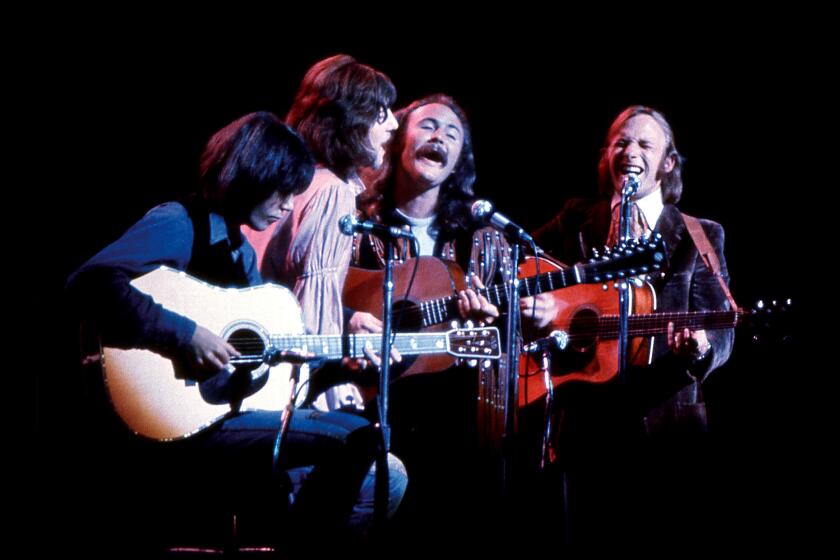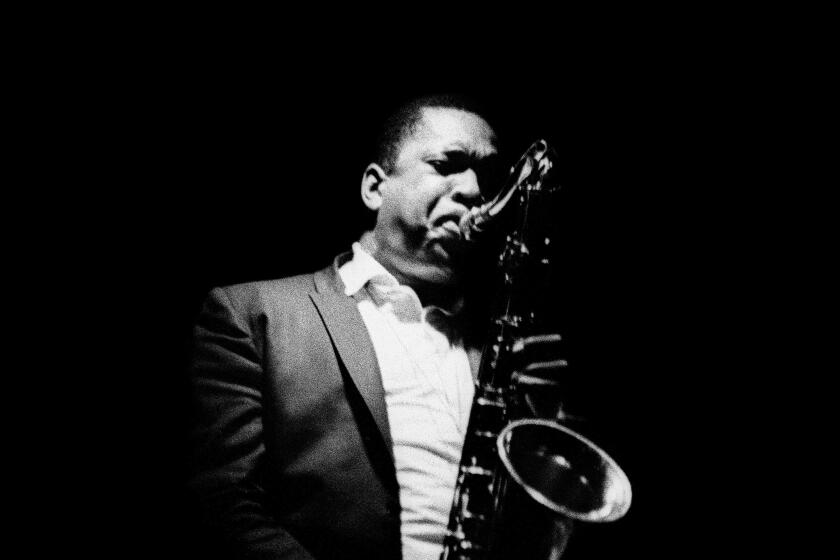Rampart Records’ essential box set mines East L.A.’s 1960s and ’70s soul-funk scene
- Share via
Various Artists: “Land of 1,000 Dances: The Rampart Records 58th Anniversary Complete Singles Collection”
(Rampart/Minky)
One of the more surprising trends rolling through the Southern California underground recently has been the inspiration of Art Laboe-approved oldies on a rising generation of multihyphenate musicians. Songs from the late 1950s through the mid-’70s have been reworked or reassessed by artists including Cuco, Los Retros, the Marias, Jasper Bones, Las Cafeteras and dozens more. The seeds of the sound can be found on this decades-spanning collection of singles from the great L.A. indie Rampart, which drew its talent from the fruitful East L.A. R&B, Latin and soul scene.
Issued to celebrate Rampart’s, er, 58th anniversary, the Pacific Palisades label Minky has compiled singles stretching back to its birth in early 1961. Rampart, which was founded by Hollywood entertainer, restaurateur and child actor Eddie Davis, the label and its subsidiaries (Faro, Linda, Gordo, Boomerang, Valhalla) became purveyors of what came to be known as “the West Coast Eastside sound.”
Among the bands: Cannibal & the Headhunters, Lava & the Hot Rocks, Eastside Connection, the Atlantics, the Village Callers and dozens more.

As writer Luis J. Rodriguez observes in his fascinating liner notes, the scene along Whittier Boulevard and vicinity was dense with “colorfully designed lowrider cars, spray-can and acrylic murals, Spanish-language music out of opened windows, bell-ringing street peddlers ...” The scene was enhanced by “party crews, battles of the bands, and beautiful brown women dressed to kill” to create what Rodriguez calls “one of the most dynamic cultural spaces in the country.”
The 89 songs within are chronologically arranged, and they offer a history lesson in the ways in which doo-wop, R&B, rock, Latin music and soul evolved across the decades. The first disc shows how redlining and dress codes restricted access for Latino and black musicians and fans curious about the Hollywood club scene, in the process incubating an Eastside sound. The summer 1964 single (which was later licensed for release by Reprise Records), “La La La La La” by the Blendells, is harder than anything the Beatles were putting out at the time, and “Huggie’s Bunnies” draws on the Memphis sound of Stax Records.
The baritone voice you hear on “Home on the Range”? That would belong to 1970s soul seducer Barry White. Before his voice dropped to a bass, he was the velvet-cord crooner for the Atlantics, and specialized in (what else?) make-out ballads. Another Atlantics track, the 1965 instrumental “Sonny & Cher,” is a searing proto-punk song that was recorded in Hollywood as the titular duo were becoming a Los Angeles sensation. Rampart’s most enduring hit arrived via Cannibal & the Headhunters, whose version of “Land of 1,000 Dances” became a frat-house party jam.

By the late 1960s, Rampart’s sound had expanded. The lesser-known Los Angeles septet the Village Callers built a sound driven by congas, timbales, drums, Hammond B-3 organ and bluesy guitar. Funk crept into the spooky 1972 instrumental cover of “Cho Cho San” by the Hummingbird 4, which extended across both sides of the original 45. As funk begat disco, Rampart earned acclaim and success with Eastside Connection, a 15-piece band that bridged Latin soul and disco. The outfit’s take on “La Cucaracha” turned a Mexican musical archetype into a ridiculous dance-floor groover.
Is everything on this set essential? Hardly. The fourth disc could have been scrapped altogether. But the collection nonetheless is a rich representation of a criminally overlooked scene.
More to Read
The biggest entertainment stories
Get our big stories about Hollywood, film, television, music, arts, culture and more right in your inbox as soon as they publish.
You may occasionally receive promotional content from the Los Angeles Times.











